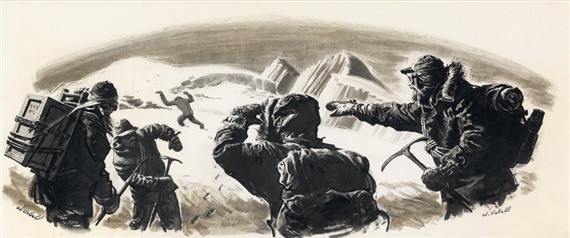
 The Pamir Mountains in east part of Tajikistan is a rugged massif with archaic scenery. The total area of the park is 2,611,674 ha and the peaks exceeds seven thousand meters. The climate is somewhat continentic. Fedchenko Glacier is the longest glacier in the world outside the polar regions. There is the Amu Darya River, known as the watertower of Central Asia. The Tajik National Park and the Pamiry in polish covered the most outstanding natural complex in the Pamirs. This national park is overview as very large protected area with a prehistoric landscape. The unique scenic values are enhanced by the mix of such glaciated heights and plateaus of alpine desert. This vast area protects valuable landscapes, rare and endangered species of flora and fauna, as well as natural and cultural monuments. There are almost 100 species of plants and animals in the park, in mysterious and endangered forms. This region is a protected point of the diversity of vascular plants. Due to the harsh environment, the fauna of the park is relatively poor, but a bit endemic. Pamiry has the highest salt lake inhabited by endemic fish forms. Reptiles and amphibians live only in border areas. One of these creatures is an unidentified species of lizard, recorded by one of the Russian naturalists. Birds that are rare in the country are recorded in the park. Among mammals, there are some rare creatures that live in remote territories. We have noticed an unidentified ethno-known animal called golub-yavan that haunts the Pamiry in the wildest part of the mountains, the pamir leporids Lepus sp. are several species of enigmatic lagomorphs that inhabits dense vegetation of a rocky landscapes, and in nature there are packs of red wolves Cuon alpinus also traversing the region, whose are rare mountain breed inscribed on the IUCN Red List. In the future, camera traps could register each of these wild animals. The article was provided by Environment Challenges Consulting and Tomek Pietrzak in July 2021. Published 1st of August 2021. Images courtesy of Ed Vebell, Yeti on the Tundra and David Mulder, Map of Central Asia from flickr. The text is based on a scientific inventory from previous years, examined on the basis of texts from nhpfund.org and the World Heritage datasheet.
The Pamir Mountains in east part of Tajikistan is a rugged massif with archaic scenery. The total area of the park is 2,611,674 ha and the peaks exceeds seven thousand meters. The climate is somewhat continentic. Fedchenko Glacier is the longest glacier in the world outside the polar regions. There is the Amu Darya River, known as the watertower of Central Asia. The Tajik National Park and the Pamiry in polish covered the most outstanding natural complex in the Pamirs. This national park is overview as very large protected area with a prehistoric landscape. The unique scenic values are enhanced by the mix of such glaciated heights and plateaus of alpine desert. This vast area protects valuable landscapes, rare and endangered species of flora and fauna, as well as natural and cultural monuments. There are almost 100 species of plants and animals in the park, in mysterious and endangered forms. This region is a protected point of the diversity of vascular plants. Due to the harsh environment, the fauna of the park is relatively poor, but a bit endemic. Pamiry has the highest salt lake inhabited by endemic fish forms. Reptiles and amphibians live only in border areas. One of these creatures is an unidentified species of lizard, recorded by one of the Russian naturalists. Birds that are rare in the country are recorded in the park. Among mammals, there are some rare creatures that live in remote territories. We have noticed an unidentified ethno-known animal called golub-yavan that haunts the Pamiry in the wildest part of the mountains, the pamir leporids Lepus sp. are several species of enigmatic lagomorphs that inhabits dense vegetation of a rocky landscapes, and in nature there are packs of red wolves Cuon alpinus also traversing the region, whose are rare mountain breed inscribed on the IUCN Red List. In the future, camera traps could register each of these wild animals. The article was provided by Environment Challenges Consulting and Tomek Pietrzak in July 2021. Published 1st of August 2021. Images courtesy of Ed Vebell, Yeti on the Tundra and David Mulder, Map of Central Asia from flickr. The text is based on a scientific inventory from previous years, examined on the basis of texts from nhpfund.org and the World Heritage datasheet.